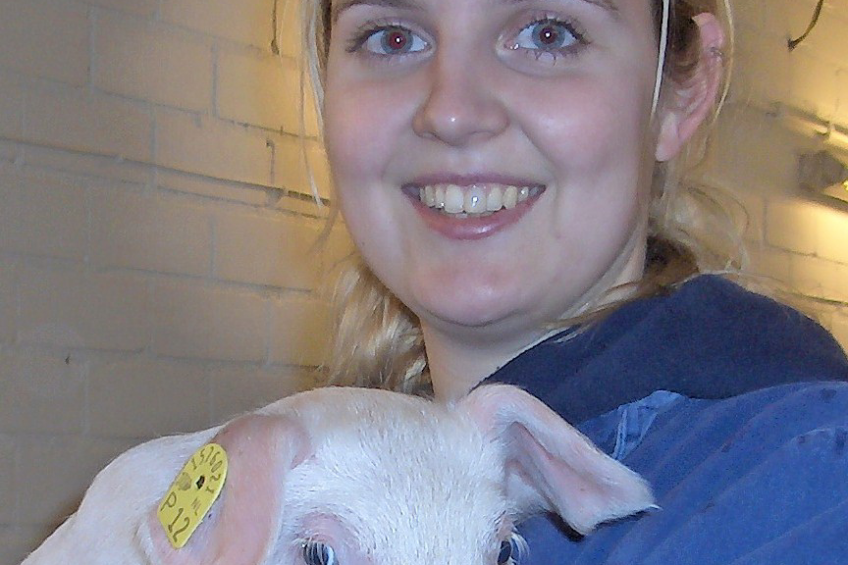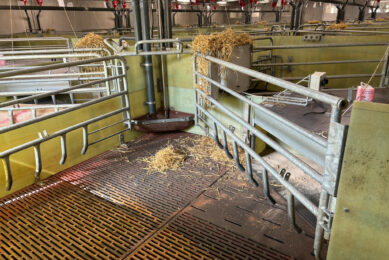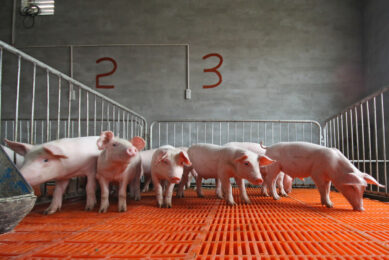Piglets profit from combination milk and milk replacer

Neonatal nutrition using milk replacers can support sows in raising large litter sizes. How do piglets behave and which piglets are taking advantage of this ‘extra’ milk supply? Recent trial results show behavioural patterns in young piglets.
By Moniek van den Bosch, Cargill
Cargill carried out trials at its Animal Nutrition Innovation Center, Velddriel, the Netherlands, to look at the effect of supplementary milk via a cup system on piglet performance and feeding behaviour. Provimi, part of Cargill’s Animal Nutrition business, used its RescueCup system where a specially designed cup is positioned in each farrowing pen to dispense an ad lib supply of milk replacer.
There were several trial objectives. Firstly, to determine the number of piglets drinking this milk replacer (RescueMilk) via the cup system. Secondly, to determine the time taken to first find and then consume milk replacer. Thirdly, to determine the effect of milk replacer on suckling behaviour and frequency. And finally, to determine the effect of milk replacer on prestarter intake.
Twenty sows and their litters, standardised at 14 piglets per litter, were monitored from farrowing until weaning at 21 days. The milk replacer was provided through the cups to half the litters from two to 16 days post-farrowing. Milk replacer was provided at two days post-farrowing to ensure sufficient colostrum intake and removed at 16 days post-farrowing to encourage solid feed intake pre-weaning. Ten control litters were not fed milk replacer. All litters had ad lib solid prestarter from four days old.
Piglets in the milk replacer treatment drank 3.6 litres per piglet of milk replacer (422 g of dry matter) during the two weeks, resulting in 9.3% of the total energy intake of piglets during lactation.
Results showed that the milk replacer increased piglet body weight compared with the controls on day 16 post-farrowing (5.51 kg vs 5.1 kg respectively) and at weaning (6.3 kg vs 6.0 kg, respectively). Further cup observations showed that those piglets that visited the cup most often had the heaviest body weights (7.3 kg); with those visiting the least frequently that had an average body weight of 5.4 kg.
Improvements in piglet body weight did not translate into improved piglet uniformity within litters.
Typically, piglets will suckle at the sow and then take milk replacer immediately afterwards. Suckling frequency seemed unaffected when milk replacer is provided through this system of cups. The trial results also showed similar prestarter intakes between the two treatments. From observations it was seen that mainly the larger piglets in both treatments consume more prestarter.
Results from these trials showed that piglets of various weights within a litter will drink a milk replacer and that intake is very low during the first week post-farrowing due to piglets becoming familiar with the location of the milk and the feeding system.
In conclusion, this trial work supported the provision of a high quality milk replacer to supplement the sow’s milk supply in larger litters. Feeding milk replacer through a cup system located in the farrowing pen was well received by the piglets and an effective labour-saving device for producers.
Supported by previous trial work, encouraging solid prestarter intakes by removing milk replacer at day 16 helped to prevent a dip in intakes post-weaning.











